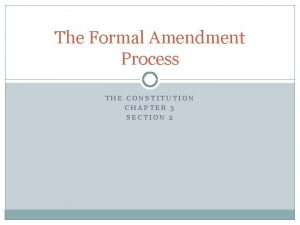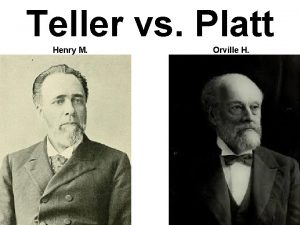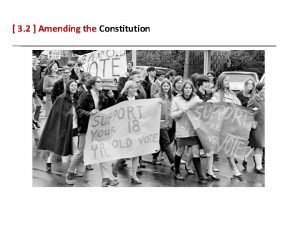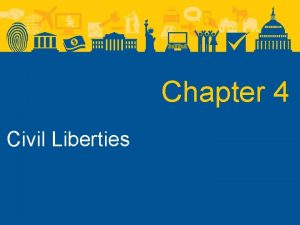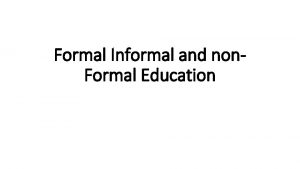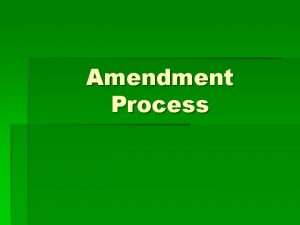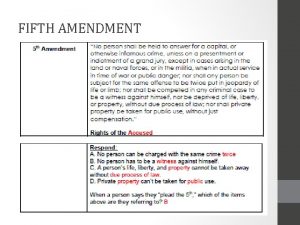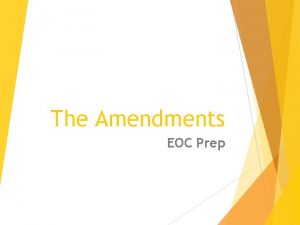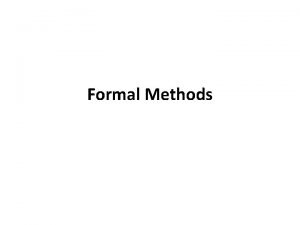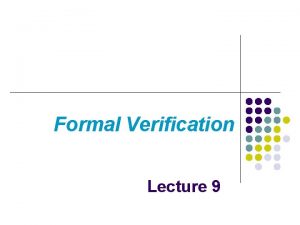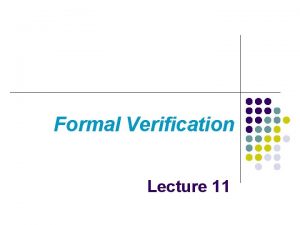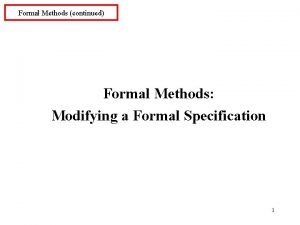Formal Amendment Chapter 3 Section 2 Formal Amendment








- Slides: 8

Formal Amendment Chapter 3 Section 2

Formal Amendment Process • Amendment a change in the words or meaning of a law or document. • Article V sets out two methods for proposal and two methods for ratification of amendments. • So, there are four possible methods of formal amendment: 1. An amendment may be proposed by a 2/3 vote in each house of Congress and ratified by ¾ of the State legislatures. • 26 of 27 amendments adopted this way. 2. An amendment may be proposed by Congress and ratified by conventions (a meeting to deal w/ matters of common concern) in ¾ of the States. • Only 21 st amendment was adopted this way. 3. An amendment may be proposed by national convention, called by Congress at the request of 2/3 of the State legislatures; it must be ratified by ¾ state legislatures. 4. An amendment may be proposed by a national convention and then ratified by conventions in ¾ of the States.

• The four different ways by which amendments may be added to the Constitution are shown here:


Article V = Federalism • The Formal Amendment process emphasizes Federalism. • Proposal takes place at the national level and ratification is a State-by-State matter.

The 27 Amendments • The Bill of Rights • The first 10 amendments • Proposed in 1789 and Ratified in 1791 • Guarantees of freedom of belief and expression, freedom and security of the person, and of fair and equal treatment before the law. • The Later Amendments • Grew out of different sets of circumstances. • Last one Ratified in 1992


 Describe the four possible methods of formal amendment
Describe the four possible methods of formal amendment Teller and platt amendments
Teller and platt amendments Section 2 quiz formal amendment
Section 2 quiz formal amendment 24th amendment formal or informal
24th amendment formal or informal Chapter 19 civil liberties first amendment freedoms
Chapter 19 civil liberties first amendment freedoms Chapter 19 civil liberties first amendment freedoms
Chapter 19 civil liberties first amendment freedoms Section quick check chapter 10 section 1 meiosis answer key
Section quick check chapter 10 section 1 meiosis answer key Inculto informal
Inculto informal Infromal education
Infromal education
